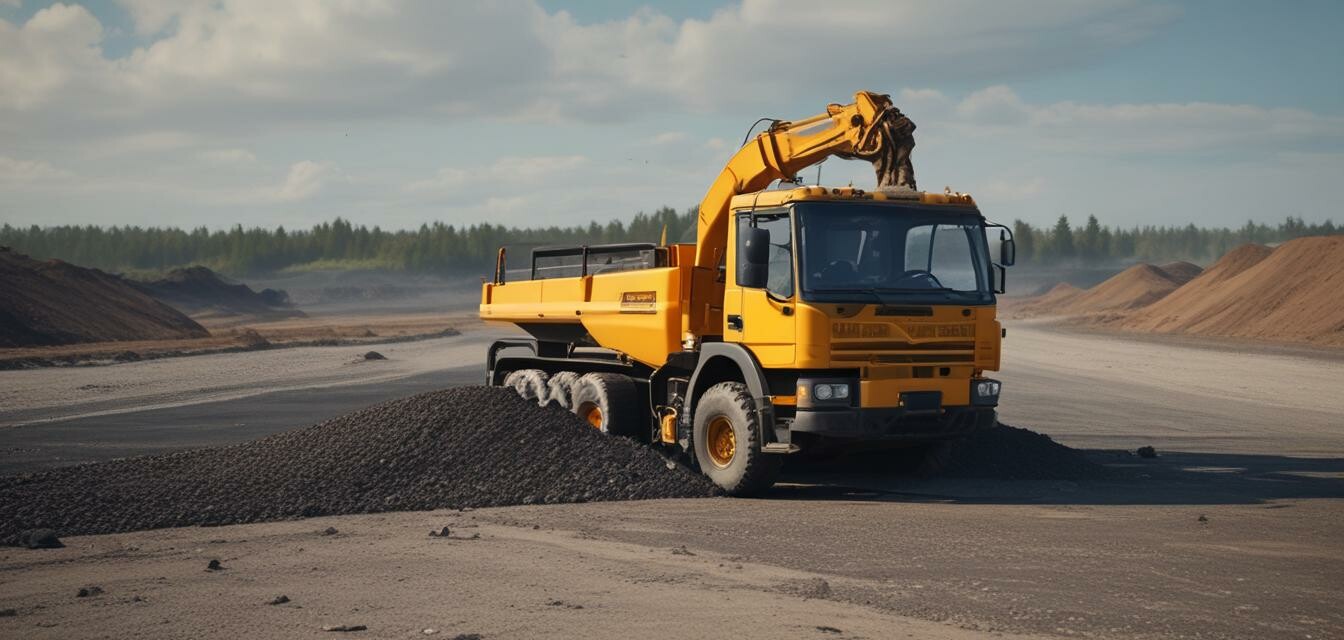
Innovations in asphalt recycling for 2025
Key Takeaways
- The asphalt recycling industry is set for significant technological advances in 2025.
- New methodologies improve efficiency and sustainability of asphalt recycling.
- Technologies such as warm mix asphalt (WMA) are becoming more prevalent.
- Investment and awareness of green practices are contributing to market growth.
- Emerging trends favor the use of recycled materials in new asphalt formulations.
The asphalt recycling landscape is evolving rapidly, with 2025 bringing forth new innovations that will shape the way the industry operates. As we strive for sustainability and efficiency, the demand for recycled asphalt is increasing, leading to exciting advancements in technology and practices. In this article, we'll take a closer look at the cutting-edge methods and trends that are revolutionizing asphalt recycling.
Current state of asphalt recycling
Asphalt recycling has been a vital part of road construction and maintenance for decades. It involves the reprocessing of existing asphalt to create new pavement material, which conserves resources and reduces waste. The recycling process typically entails the following steps:
- Collection of old asphalt from roads.
- Crushing of the asphalt into smaller pieces.
- Heating and mixing with new materials.
- Application of the new asphalt mixture to the road surface.
However, challenges remain in maximizing the effectiveness of these processes, making it essential to explore innovative solutions.
Emerging technologies in asphalt recycling
As the industry looks towards 2025, several noteworthy technologies are emerging that promise to improve the recycling process significantly:
1. Warm mix asphalt (WMA)
WMA technology allows for the production of asphalt mixtures at lower temperatures, making it a greener alternative to traditional hot mix asphalt (HMA). Benefits include:
- Reduced energy consumption
- Lower greenhouse gas emissions
- Improved workability in cooler temperatures
2. Reclaimed asphalt pavement (RAP)
The use of RAP in new asphalt mixtures has become a common practice. This method not only reduces the need for virgin materials but also helps save costs. Innovations in the processing of RAP include:
- Advanced screening techniques to ensure quality.
- Improved blending methods to enhance performance.
- Monitoring of material characteristics to maximize usage.
3. Foamed asphalt technology
Foamed asphalt involves introducing a small quantity of water and air into hot asphalt to create foam. This technology improves workability and mixing efficiency, making it an exciting option for recycling.
Market trends driving innovation
Several trends are contributing to the growth and innovation of asphalt recycling:
| Trend | Description | Impact on the industry |
|---|---|---|
| Increased regulatory focus | Governments are implementing stricter environmental regulations. | Pushing adoption of sustainable practices and technologies. |
| Investment in green technology | More funds are being allocated to develop eco-friendly solutions. | Enhancing the efficiency of recycling processes. |
| Rising demand for sustainable materials | Consumers are favoring eco-conscious products. | Stimulating the use of recycled asphalt in construction. |
| Emergence of innovative startups | New companies are entering the market with fresh ideas. | Fostering competition and rapid advancements. |
Benefits of asphalt recycling
With these innovations on the horizon, asphalt recycling systems are becoming more effective, leading to numerous benefits:
- Conservation of natural resources.
- Reduction in construction waste.
- Decreased energy costs associated with asphalt production.
- Lower emissions of harmful pollutants.
Conclusion
As we approach 2025, the advancements in asphalt recycling technology and practices are reshaping the industry landscape. By adopting new methods and focusing on sustainable practices, those in the paving sector can not only lower costs and energy consumption but also lead the way in creating a greener future. For asphalt professionals and DIY enthusiasts alike, staying updated on these innovations is crucial to make informed choices in paving projects. To continue exploring more about asphalt products and tools, check our sections on asphalt mixes and additives, asphalt pavers and rollers, and how-to guides.
Pros
- Promotes sustainable practices in construction.
- Cost-effective in the long run.
- Reduces environmental impact from road work.
- Increases the lifespan and performance of asphalt surfaces.
Cons
- Initial technology investment can be high.
- Requires skilled labor for handling advanced machinery.
- Quality control can be challenging in the recycling process.

